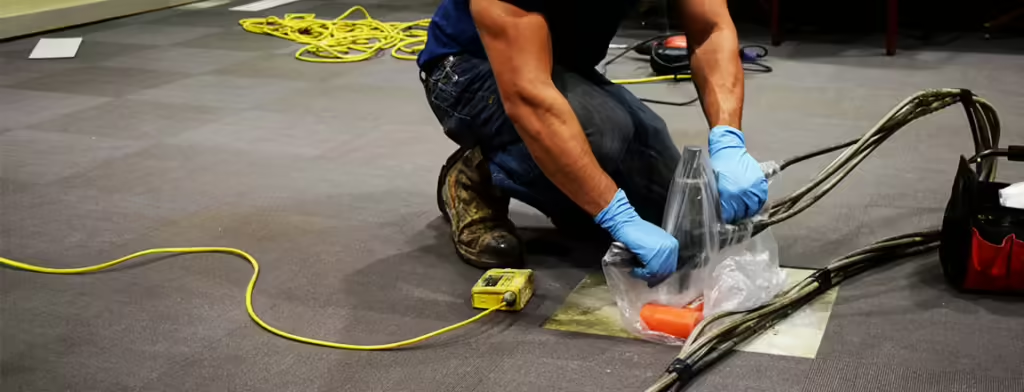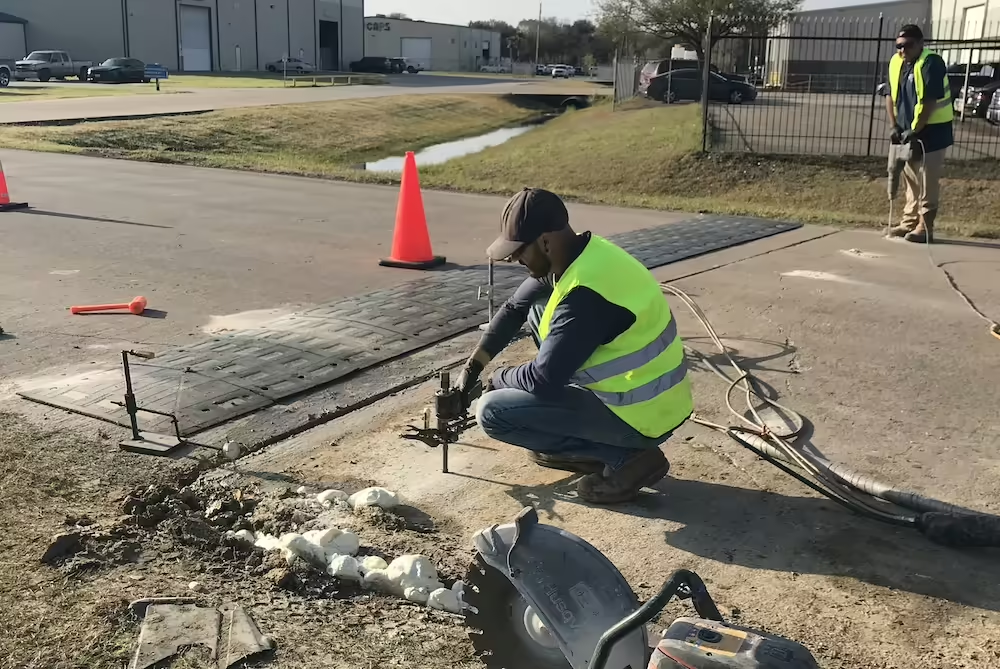If you’ve noticed uneven concrete around your home or business, you might be wondering what causes it and how to fix it. Concrete jacking is one solution that’s quicker and more affordable than full replacement.
What is Concrete Jacking?
Concrete jacking is a method used to lift and stabilize sunken concrete slabs. Also known as slab jacking or concrete lifting, it involves injecting material beneath the slab to raise it back to its original position. It’s a smart alternative to tearing out and replacing concrete.
How Concrete Jacking Works
Don’t worry, the process is less invasive than you might think.
It starts by drilling small holes in the sunken concrete. Then, a lifting material (we’ll discuss in the next section) is injected through those holes. The material fills gaps under the slab, expands, and lifts the concrete. Once it reaches the right height, the holes are patched, and the surface is ready to use!
How long does concrete jacking take?
Most residential jobs take just a few hours. With polyurethane foam, areas are often ready for use the same day.

Types of Concrete Jacking
There’s more than one way to lift a slab, and the material used can make a big difference.
Polyurethane Foam Jacking (Polyjacking)
Foam jacking involves injecting a lightweight, high-density foam beneath the concrete slab. The foam expands rapidly, filling empty spaces and gently lifting the concrete back to its original position. It’s clean, fast, and precise. Since the foam is so lightweight, it doesn’t add pressure to unstable soil like heavier materials do. It also resists moisture, helping prevent future settling and water-related damage.
Mudjacking
This older technique uses a heavy slurry of water, soil, sand, and cement. It can be affordable but adds weight to already unstable soil and takes longer to cure. Learn more about foam jacking vs. mudjacking in this article.
Sandjacking
A less common method using dry sand and air to fill voids under slabs. It’s useful in areas with specific soil needs.
Can all concrete be jacked?
At Leveled Concrete, we can lift most concrete surfaces if the slab is intact. If it’s cracked beyond repair or crumbling, replacement might be better.
When Do You Need Concrete Jacking?
Look for signs like:
- Uneven or sloping sidewalks, patios, or driveways
- Water pooling around concrete
- Cracks in slabs
- Sticking doors or windows near concrete slabs
These symptoms mean the soil underneath may have settled or washed away. If ignored, the problem can get worse and lead to safety risks or drainage issues.
Benefits of Concrete Jacking
It’s normal to wonder if concrete jacking is worth it. These benefits speak for themselves:
- Saves money compared to full replacement
- Quick cure times, especially with foam
- No need to demolish or remove slabs
- Minimal mess or downtime
- Helps prevent future settling
Where Concrete Jacking is Most Useful
This method isn’t limited to one type of property. It works in a variety of settings, both residential and commercial.
- Home: sidewalks, driveways, pool decks, garage floors
- Commercial: warehouse floors, parking lots, entryways
Concrete Jacking vs. Replacement
Not every concrete issue needs a full replacement. Here’s how to know when repair makes more sense:
Choose concrete jacking when slabs are still in good shape but have settled. If the concrete is crumbling or has major damage, replacement might be the better choice. A concrete repair professional can help you decide what’s best for your situation.

Partner With Leveled Concrete
Sunken concrete is a common issue…and it’s one we solve every day. Leveled Concrete uses proven methods that get great results without the hassle of total replacement.
Our team specializes in lifting and stabilizing sunken concrete using modern polyurethane foam injection. We handle:
- Driveway repair
- Sidewalk leveling
- Patio lifting
- Pool deck repair
- Commercial slab repair
- Parking lot lifting
Our method is fast, clean, and long-lasting. If you’re seeing signs of settling, schedule a free inspection with our team today!

